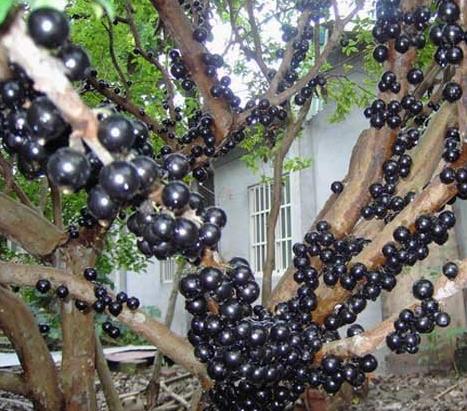How to grow potted peppers
Pepper is a potted plant with very high yield, which contains a variety of vitamins and trace elements, in which vitamin An and vitamin c are outstanding in vegetables. Capsaicin can promote appetite, help digestion, and has the effect of dispelling cold and dehumidification. Its roots are large and deep, it needs a large and deep flowerpot, it also needs a sunny and warm place to thrive, it needs fertile, well-drained soil and proper fertilization.
Chili peppers are nutritious and rich in a variety of vitamins and trace elements. Today, we will teach you how to grow potted chili peppers. Friends who like to eat chili peppers can learn about them, and then they can eat their own chili peppers.
Pepper, also known as horn pepper, long pepper, etc., nutritious, rich in a variety of vitamins and trace elements, is an almost essential seasoning in many people's homes every day. You might as well plant a pot or two at home, so you don't have to go to the market to buy it. Pick it at any time, fresh and safe. Next, the editor will share with you the planting method of potted chili pepper. I hope it will be helpful to you!
1. Seeds
There is no need to buy seeds specially. When buying chili peppers in the supermarket, choose larger, ripe red chili peppers. After eating the chili peels and vegetables, the chili roots left behind will be found to have many chili seeds on them. Take a look at the chili seeds, which are harder. Those that have already matured can be used. If the color is white and smaller and softer, you can throw it away. Put these mature chili seeds in a dry place in the kitchen or dry in the sun.
2. Soil
Potted pepper is mainly composed of rotten leaf soil rich in humus. It can be configured with peat, garden soil and organic fertilizer. The appropriate ratio is 1, 3, 3, and 0.5.
3. Sowing seeds
You can sow the seeds directly, or soak the bought chili seeds in warm water of 50-55 ℃ for 20 minutes to facilitate germination. After the soil is watered thoroughly, sow the seeds on the soil surface (2-3 seeds per hole if sowed on demand), cover the soil with about 1 cm, and keep the soil moist. It germinated in about 3 to 5 days at 25 ℃, but it was difficult to germinate when it was below 15 ℃.
4. Transplanting or transplanting seedlings
When the buds grow to about ten to twenty centimeters, they can be transplanted. if they are not transplanted, they should be separated from the weak seedlings and too many seedlings, leaving only a few sturdy ones. After the pepper seedlings sprout, you can start to grow the seedlings with 2 true leaves. Each cup leaves one of the best, and the rest is pulled out. Don't be reluctant to give up, or you won't grow well.
5. Colonization
When the pepper seedlings grow to about 10 cm high, they can begin to transplant. Because of the disposable cups used, it is very convenient for the pepper balcony to be planted on the balcony, directly pouring out the whole cup of soil and seedlings, and then transplanting to a large pot. Pepper balcony pot planting after transplanting, pay attention to do not put the sunny place, the transplanting time is generally more appropriate after sunset in the evening, sunless weather is the most suitable for transplanting. Remember to water thoroughly after transplanting. The pepper seedlings will stand up in a few days.
6. Daily management
Since then, fertilizing every half a month, adding 5g / 10g compound fertilizer per pot, the light requirement is not strict, but the lack of light will delay the fruiting period and reduce the fruiting rate. Note that hot pepper is drought-tolerant and should not be watered. More water is needed in the fruiting period of hot pepper. But after the pepper seedling stands up, do not water, let the seedling grow stout, do not grow in vain, affect the pepper balcony pot planting later stage hanging fruit.
If you want your chili to bear more fruit, you not only need to apply thin fertilizer frequently, but also need suitable fertilizer. In addition to daily topdressing, you can add the right amount of rotten cake fertilizer or animal manure under the pot soil when the pot planting on the balcony is just transplanting.
When pepper seedlings grow, you can usually apply fertilizer once every half a month, and organic fertilizer is the best. The soil around the root of pepper is loose and put in fertilizer. The fertilizer must be fermented and rotten organic fertilizer, and you generally don't use chemical fertilizer.
7. Picking
Waiting for the harvest, because it is planted on the balcony, the place is relatively small, so the fruit period of planting on the balcony can properly add a small shelf to fix the pepper branch to prevent the pepper from tilting after hanging the fruit.
- Prev

Planting and cultivating skills of tree grape
Tree grape planting and training skills 1. Tree grape planting tree grape scientific name Jiabao fruit, also known as Zhenbao fruit, quasi-love god wood, etc., native to South America, for peach gold.
- Next

Why are dental implants so expensive?
If you think planting is simply screwing a screw in your mouth, then you are wrong! If it's just a screw, then the market is now.
Related
- Fuxing push coffee new agricultural production and marketing class: lack of small-scale processing plants
- Jujube rice field leisure farm deep ploughing Yilan for five years to create a space for organic food and play
- Nongyu Farm-A trial of organic papaya for brave women with advanced technology
- Four points for attention in the prevention and control of diseases and insect pests of edible fungi
- How to add nutrient solution to Edible Fungi
- Is there any good way to control edible fungus mites?
- Open Inoculation Technology of Edible Fungi
- Is there any clever way to use fertilizer for edible fungus in winter?
- What agents are used to kill the pathogens of edible fungi in the mushroom shed?
- Rapid drying of Edible Fungi

